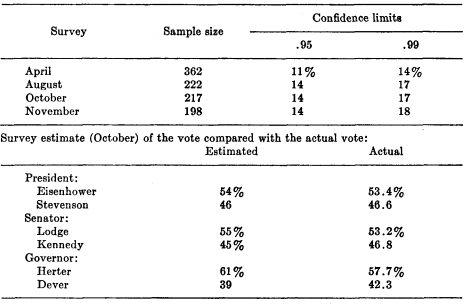Article contents
The Independent Voter in 1952: A Study of Pittsfield, Massachusetts*
Published online by Cambridge University Press: 02 September 2013
Extract
A challenging problem for both the student of political behavior and the practical politician is the self-labeled independent voter. Much of the research on what appears to be an increasingly larger segment of the American electorate has been either historically or sociologically oriented in the sense that it has focused on trend studies of the voting pattern of this group or has attempted to describe it in terms of its objective characteristics. Frequently, by inference at least, we are led to believe that the future political behavior of the independent can be anticipated if we have information of the above nature. The central purpose of this article is to present evidence favoring the hypothesis that the political behavior of the independent is more closely related to relevant psychological variables, such as his political perceptions, than to his past voting habits or his objective attributes.
During the period from April through November of 1952, the author directed a detailed study of the political opinions and behavior of the residents of Pittsfield, Massachusetts, a city of approximately 53,000 people. The research methods employed in the project included a systematic historic analysis of the community, a series of four public opinion surveys, content analysis of some of the mass media of communication, and a panel study. The first poll took place late in the spring of 1952, the second in August, and the third and fourth were carried out just prior to and immediately following the November elections. The panel members, coming from a wide range of socio-economic backgrounds, were interviewed periodically throughout the course of the project.
- Type
- Short Papers
- Information
- Copyright
- Copyright © American Political Science Association 1953
References
1 For an informative review of the history and present nature of research on the independent voter, the reader is referred to Eldersveld, Samuel J., “The Independent Vote: Measurement, Characteristics, and Implications for Party Strategy”, this Review, Vol. 46, pp. 732–53 (09, 1952)Google Scholar.
2 Sample sizes and confidence limits:

3 The respondents in each survey were asked the question: “Do you consider yourself a Republican, Democrat, or independent?”
- 2
- Cited by





Comments
No Comments have been published for this article.